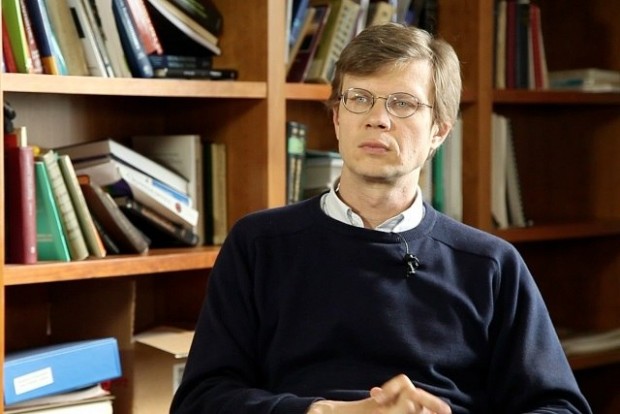Slow and Stopped Light
Harvard Prof. Mikhail Lukin on the quantum mechanical switch, improving the lifetime of our memory, and quantum artificial intelligence
videos | January 29, 2014
What are completely secure ways to transmit the information? Is there any way of atoms to absorb the photons, but preserve the quantum state carried by the light pulse? Professor of Physics at Harvard University Mikhail Lukin explains potential application of quantum networks.
It is well known from the time of Einstein that light travels in free space with an amazingly fast speed. However, it turns out that when light interacts with matter it is possible to dramatically slow its speed down. The idea is that whenever light enters the material medium, the photons are no longer free to propagate as in a free space. In fact, what they have to do is they have to hop from atom to atom. As a result, these coupled waves of photons and their polarization, polarization wave in the atomic medium, they propagate together. And a combined wave can have the velocity which is much smaller then the speed of light in vacuum.

In modern society lightwaves are used for communicating information. And the reason why light is such a good carrier is because it’s very fast, and also it can propagate for very long distances without being disturbed. What our work showed is that by just slowing down and stopping the light pulse we can effectively map the information which is carried by light into certain state of the material medium. While in matter this information can stored for some period of time, and then later retrieved, or perhaps manipulated in some special way, and the key point is that can be done completely quantum mechanically.
Moreover, this kind of quantum networks may enable distributed quantum computation, in a way how conventional optical fiber networks are used now to make classical computers work in unison. Another important direction which is being explored by us and others involves making use of this kind of slow photons to create strong interaction between individual light quanta. I guess, many of you remember the science-fiction movies, where some heroes are trying to use lightsabers to deflect each others. Of course in practice, in a conventional material such things are impossible.





























